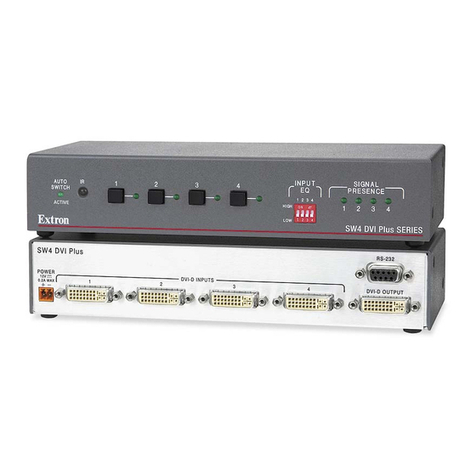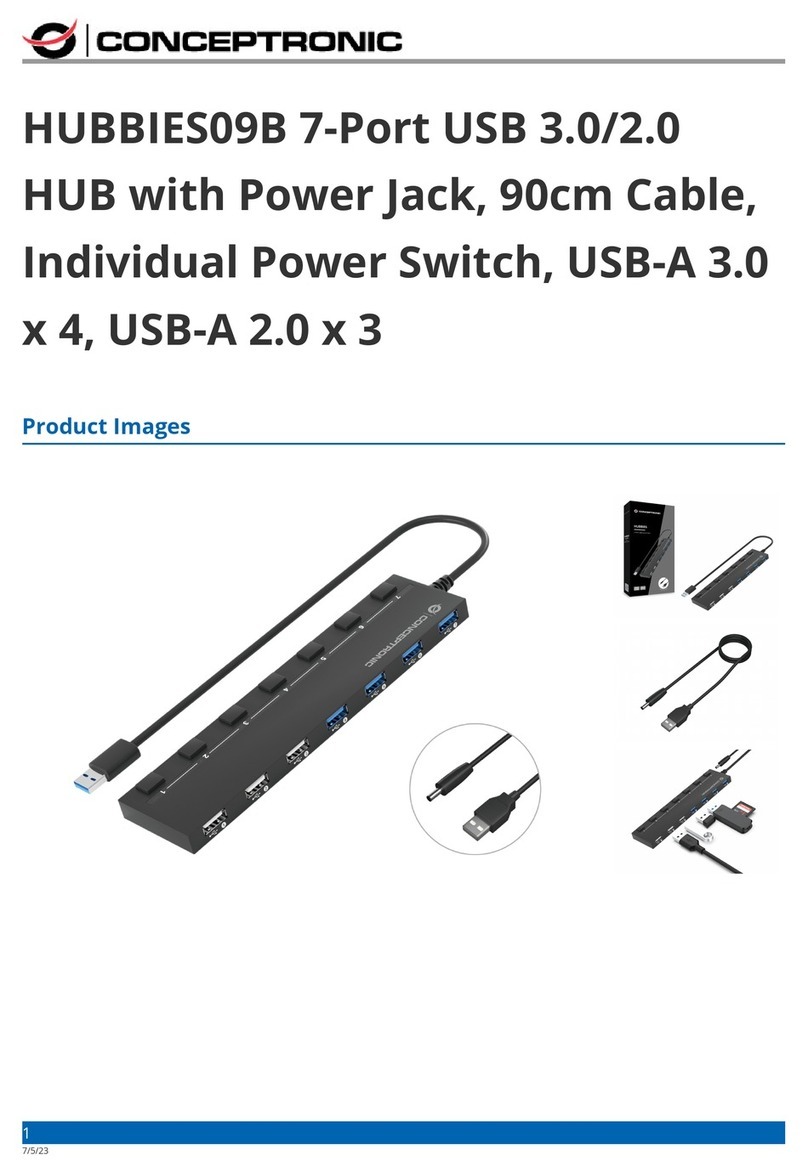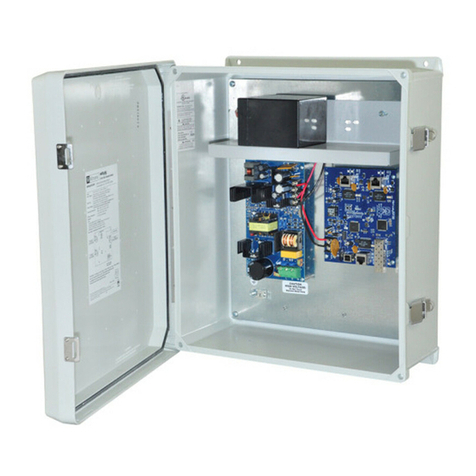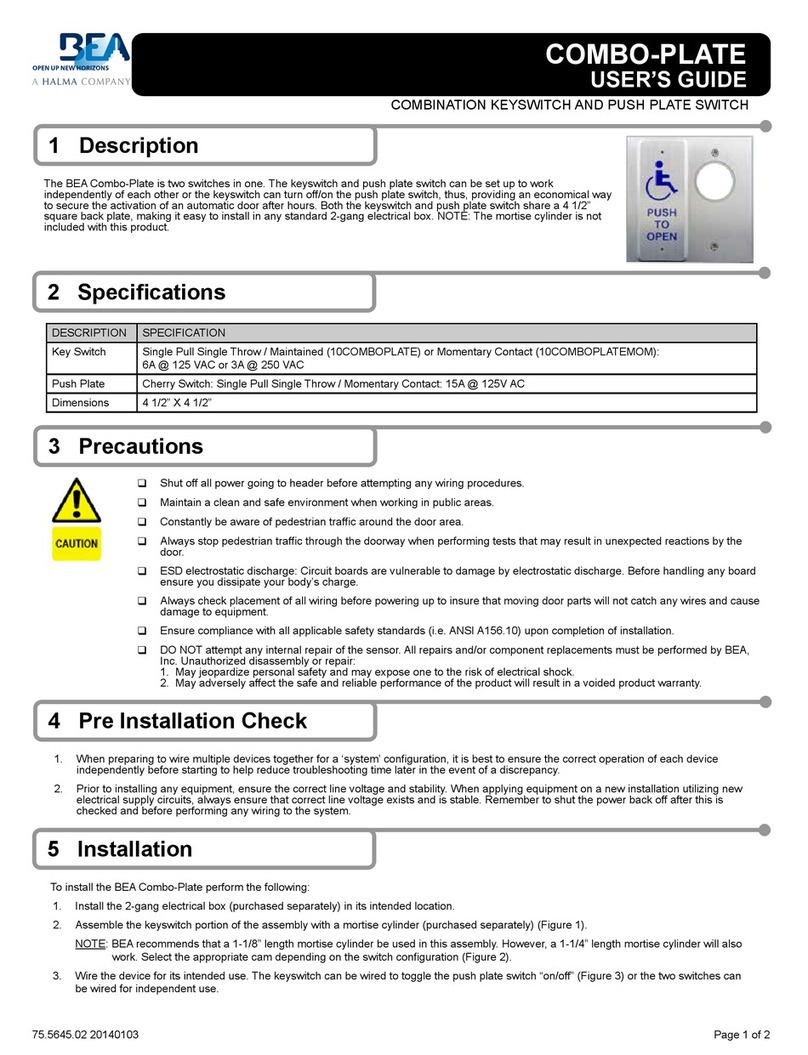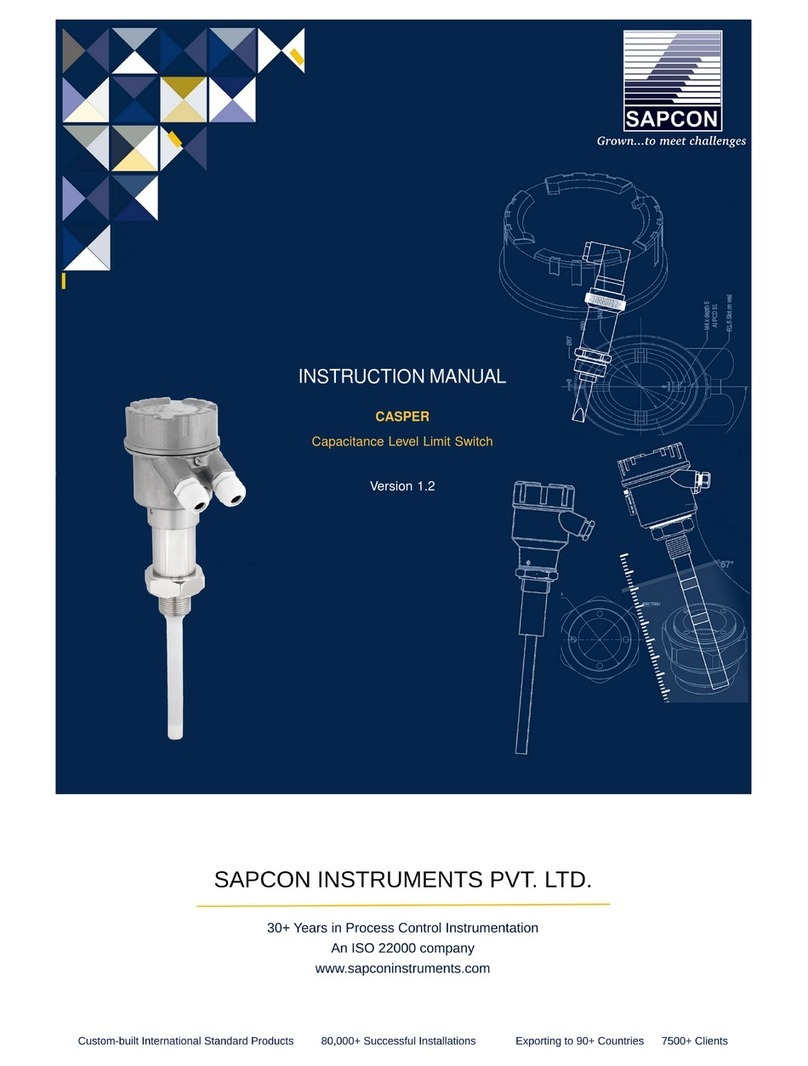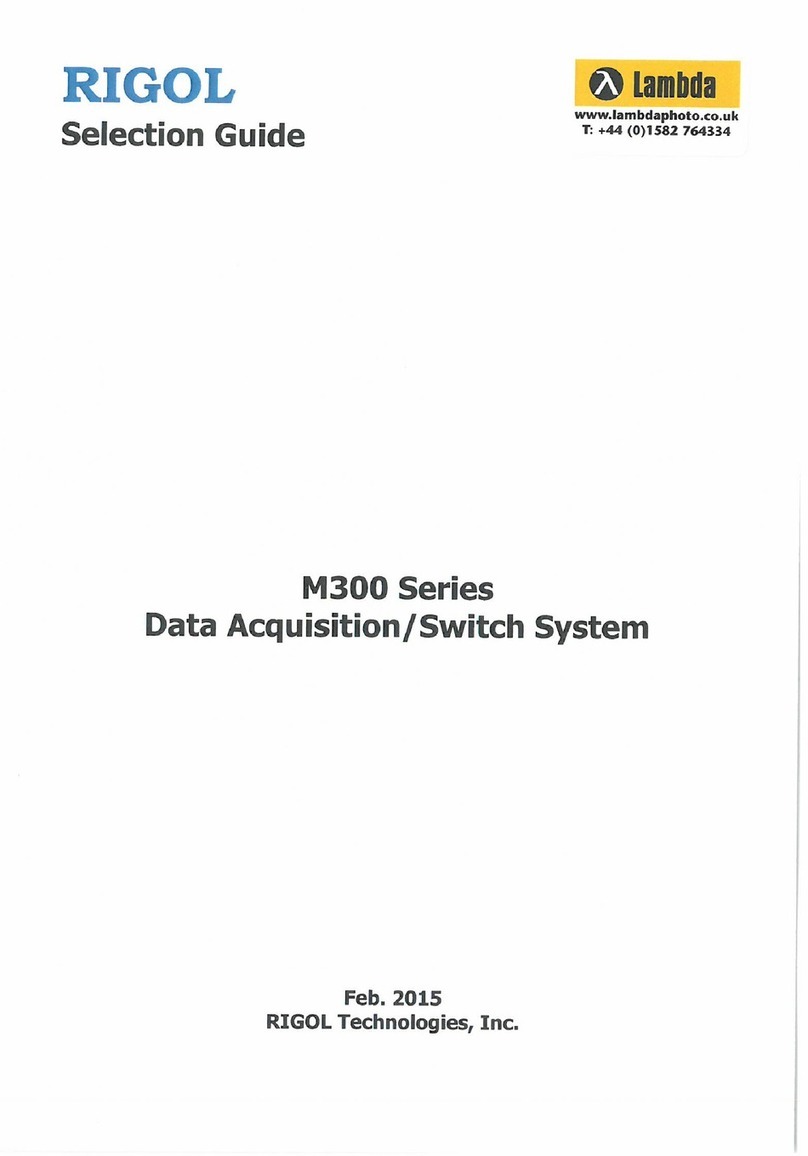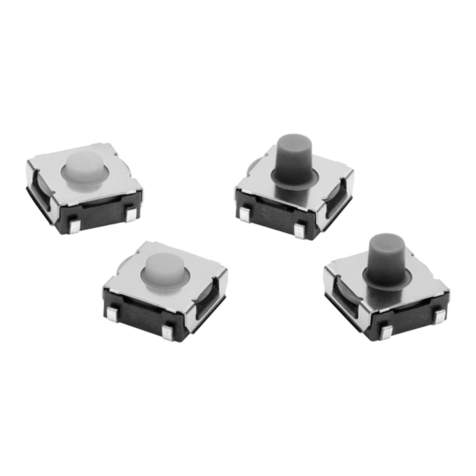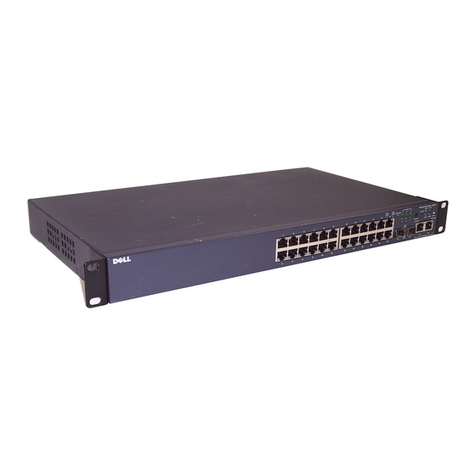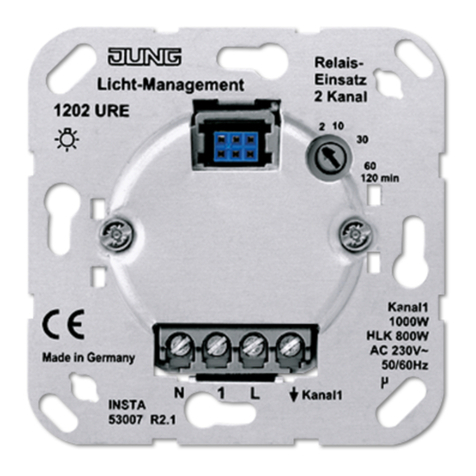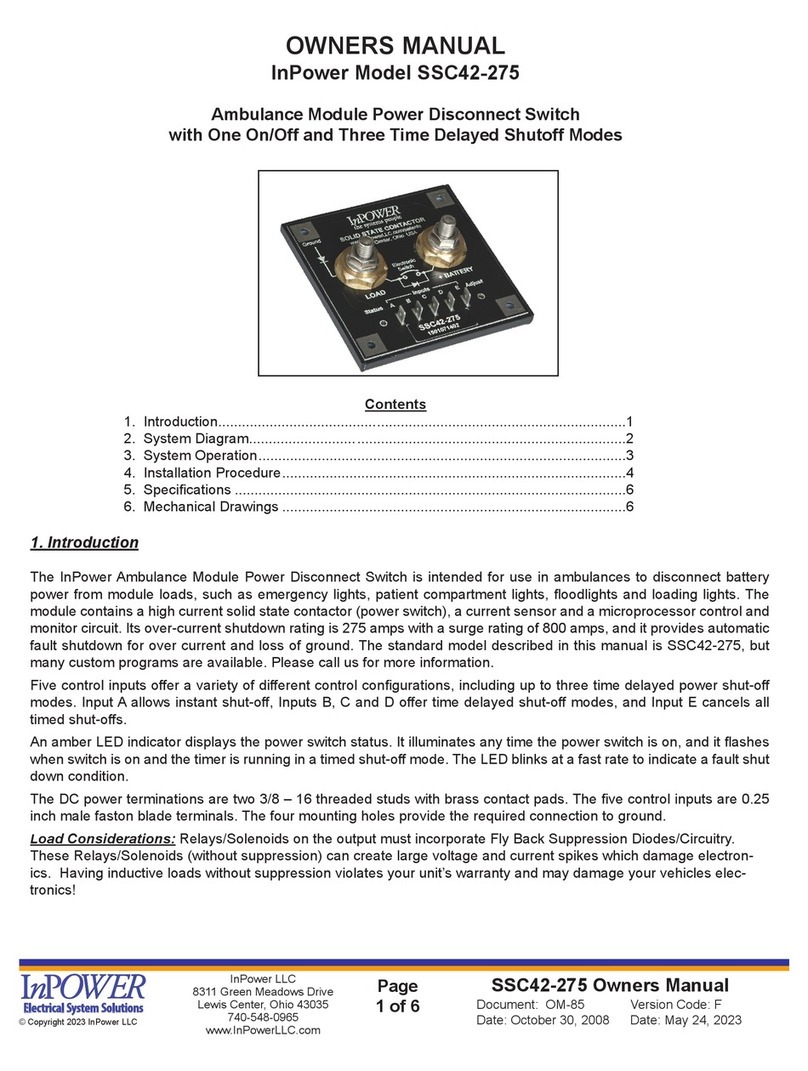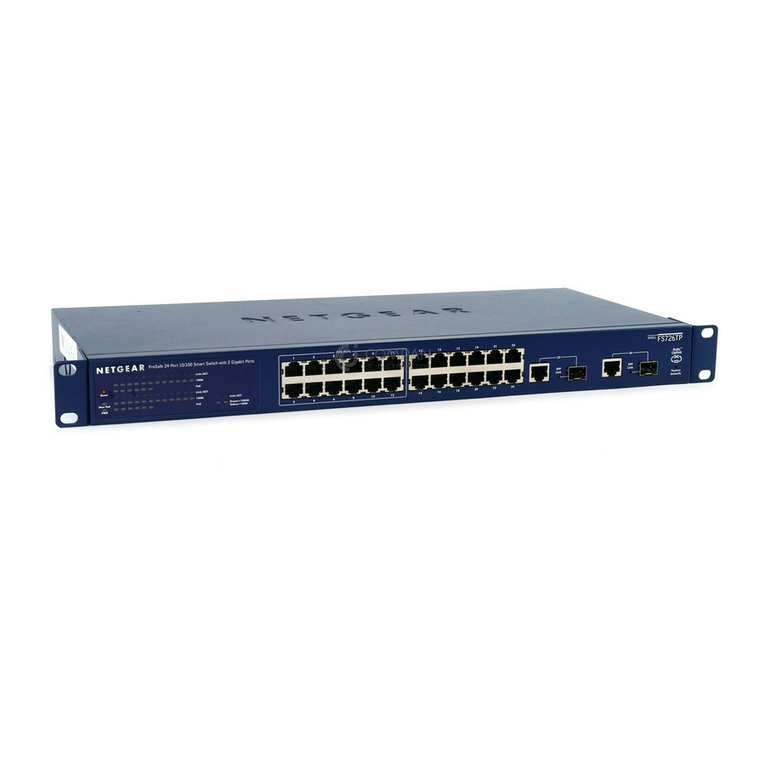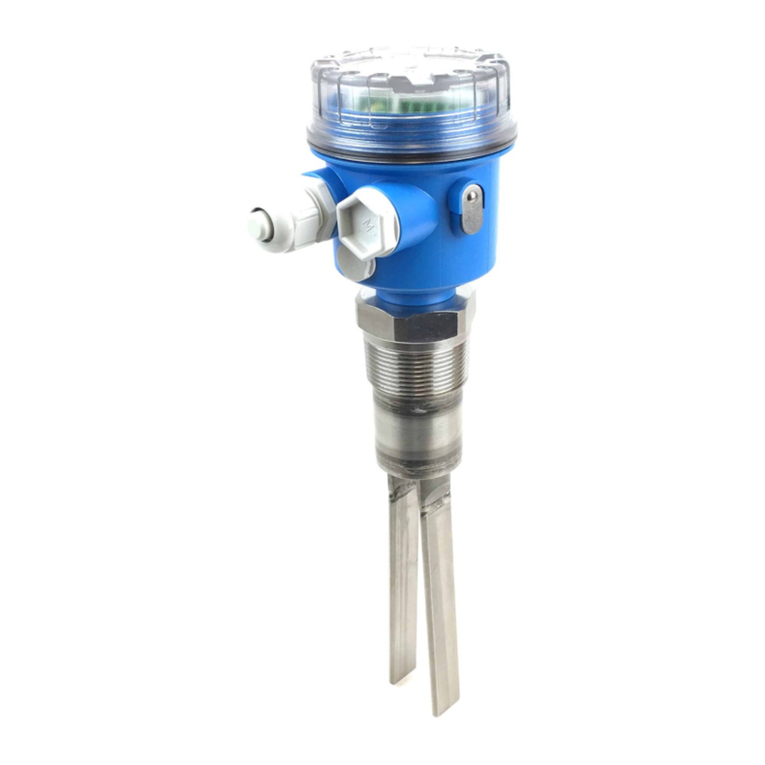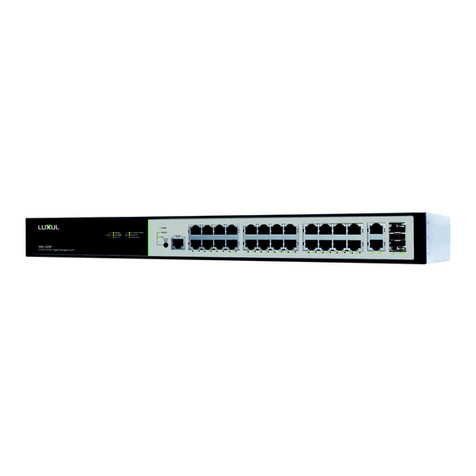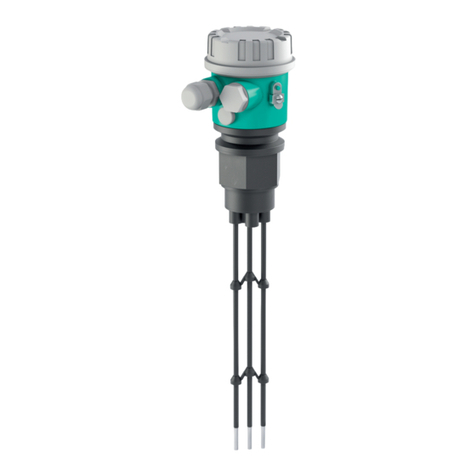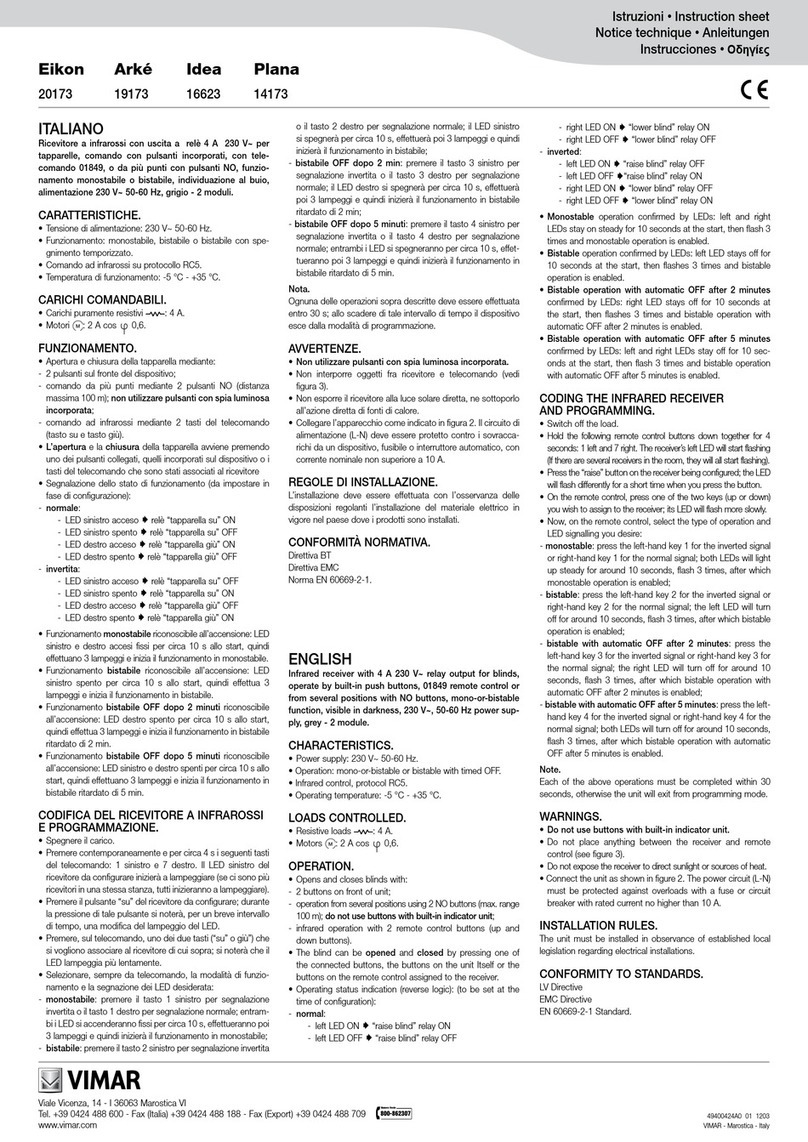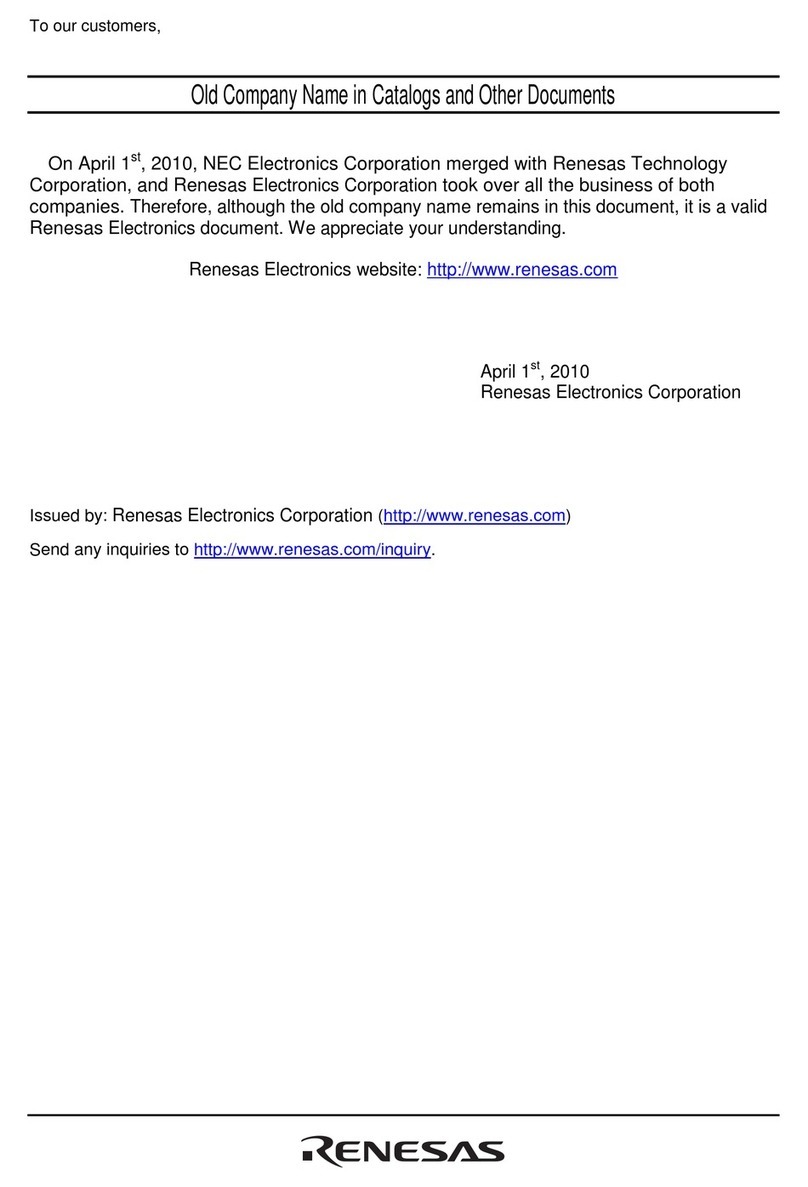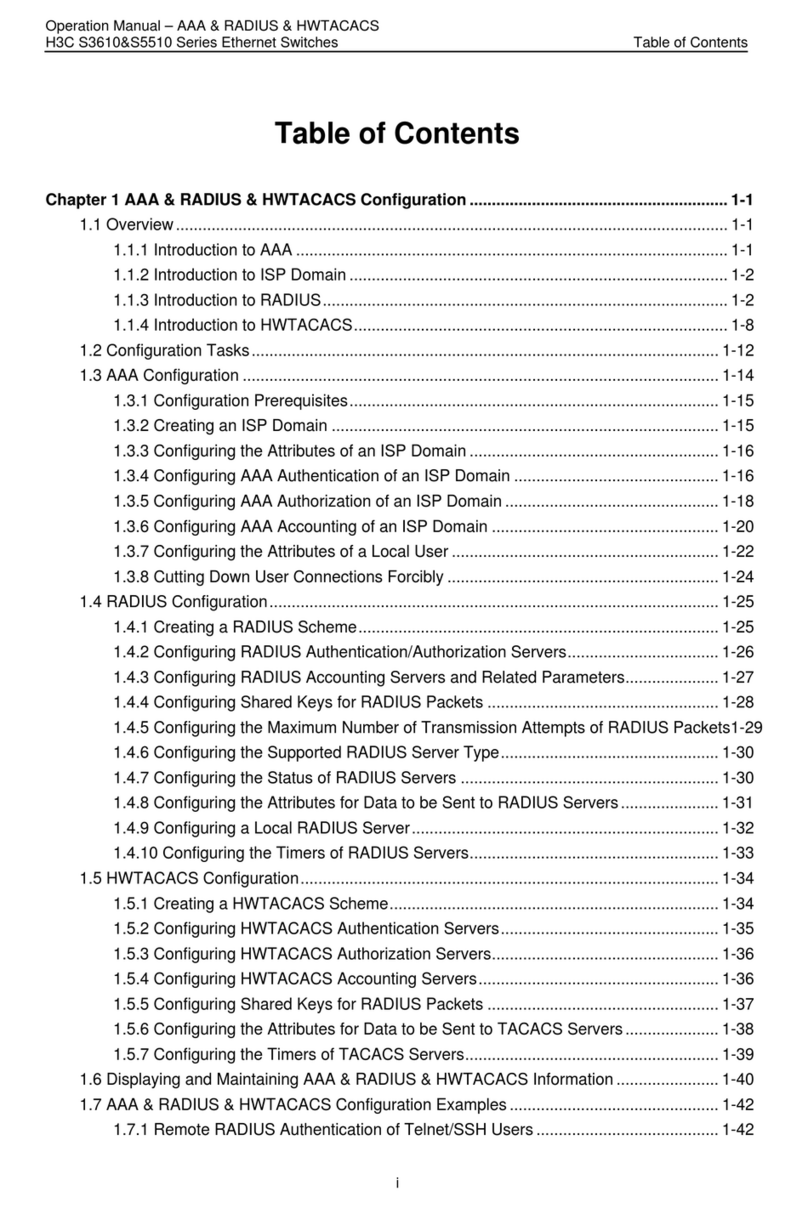Sinexcel PWD-300M User manual

PWD-300M
User Manual
Ver 1.00


Sinexcel Electric PWD-300M Power Switching Device
User's Manual
Data Version V1.0
Date of filing 2023-3-5
BOM code
Applicable to PWD-300M
Shenzhen Sinexcel Electric Co., LTD provides a full range of technical support for customers. Users can contact the nearest
office or customer service center of Shenzhen Sinexcel Electric Co., LTD
Shenzhen Sinexcel Electric Co., LTD .All rights reserved. Contents are subject to change without notice.
Shenzhen Sinexcel Electric Co., LTD Company website: www.sinexcel.com
Address:Block 6, Block 2, Nanshan Baiwangxin Hi-Tech Industrial Park, No.1002 Songbai Road, Nanshan District,
Shenzhen, China
Postal Code:518055
Customer service hotline: 0755-8651-1588
Company Fax:0755-8651-3100
E-mail:[email protected]


Table of Contents
Table of Contents................................................................................................................................................................I
Chapter 1Overview ............................................................................................................................................................3
1.1 Model Definitions ..................................................................................................................................................3
1.2 Explanation of symbols.........................................................................................................................................3
1.3 Safety Instructions ................................................................................................................................................4
1.3.1 Safety instructions in mechanical installation..............................................................................................4
1.3.2 Safety instructions in electrical connection .................................................................................................5
1.3.3 Safety instructions for switching boxes in operation ...................................................................................5
1.3.4 Repair and Replacement Safety Instructions..............................................................................................6
1.3.5 Other ..........................................................................................................................................................6
1.4 Caution .................................................................................................................................................................7
1.4.1 Personnel requirements..............................................................................................................................7
1.4.2 Scope of equipment use.............................................................................................................................7
1.4.3 Chassis identification..................................................................................................................................7
1.4.4 Instructions .................................................................................................................................................7
Chapter 2Product Introduction ...........................................................................................................................................8
2.1 SystemApplications...............................................................................................................................................8
2.2 Technical parameters............................................................................................................................................8
2.3 Dimension...........................................................................................................................................................10
2.4 Basic Function Description..................................................................................................................................12
Chapter 3Equipment installation ......................................................................................................................................17
3.1 Transport and storage.........................................................................................................................................17
3.2 Open Box Inspection...........................................................................................................................................17
3.2.1 Overview...................................................................................................................................................17
3.2.2 Packing list................................................................................................................................................17
3.3 Installation requirements.....................................................................................................................................18
3.3.1 Environmental requirements.....................................................................................................................18
3.3.2 Carrier requirements.................................................................................................................................18
3.3.3 Handling requirements..............................................................................................................................18
3.3.4 Other requirements...................................................................................................................................18
3.4 Equipment installation.........................................................................................................................................19
3.5 Electrical connection...........................................................................................................................................19
3.5.1 System Configuration................................................................................................................................19
3.5.2 System grounding.....................................................................................................................................20

IIContents
3.5.3 WireCable connection...............................................................................................................................20
3.5.4 Connecting communication lines..............................................................................................................20
3.5.5 Dry node connection.................................................................................................................................22
3.6 Check after installation........................................................................................................................................23
Chapter 4Commissioning operation.................................................................................................................................24
4.1 Operating statusDescription................................................................................................................................24
4.2 Control method ...................................................................................................................................................26
4.3 Backstage display description.............................................................................................................................28
4.3.1 Event logging interface display.................................................................................................................28
4.4 Switching on and off............................................................................................................................................29
4.4.1 Pre-boot check..........................................................................................................................................29
4.4.2 Grid connection procedure........................................................................................................................29
4.4.3 Off-grid steps ............................................................................................................................................31
4.4.4 Shutdown procedure.................................................................................................................................32
4.4.5 Emergency shutdown ...............................................................................................................................32
4.4.6 Parallel operation......................................................................................................................................32
Chapter 5 Communication mode......................................................................................................................................33
5.1 EMS communication...........................................................................................................................................33
5.1.1 Ethernet port.............................................................................................................................................33
5.1.2 RS485 serial port......................................................................................................................................33
5.2 PWD-300M and PCScascade networking ..........................................................................................................33
5.3 PWD-300M is connected to the same network with multiple PCS......................................................................34
Chapter 6 Maintenance....................................................................................................................................................35
6.1 Maintenance .......................................................................................................................................................35
6.2 Power circuit connection maintenance................................................................................................................35
6.3 System working condition maintenance..............................................................................................................35
6.4 Cleaning and sanitation ......................................................................................................................................36
Appendix..........................................................................................................................................................................37
Appendix I: Quality assurance and after-sales service .............................................................................................37
Installation record.............................................................................................................................................................39

Chapter 1Overview
1.1 Model Definitions
This section describes the product model definitions covered in the manual as shown in Figure 1-1.
PWD-300M
Power300kVA
PowerSwitch Device
Module
Figure 1-1 Model Number Definition
Description.
PWD-300M indicates power switching equipment with a module rated capacity of 300 kVA also referred to as
PWD-300M power switching equipment.
1.2 Explanation of symbols
The following is a list of the identifiers applied in this manual, please read carefully and understand the meaning
represented by each symbol.
This instruction indicates that there are hazards during operation and that failure to comply
with such warning messages will directly result in serious personal injury or death.
This instruction indicates that there are potential hazards during operation and that failure to
comply with such warnings may result in personal injury or death.
This instruction indicates that there is a potential hazard during operation and that failure to
follow such warnings may result in equipment damage.
"Instructions" are additional information in the manual, highlighting and supplementing the
content, and may also provide tips or tricks to optimize the use of the product, helping you to
efficiently solve some of the problems in the application.
DANGER
WARNING
CAUTION

4Chapter 2Introduction to PCS-AC, STS Modules
1.3 Safety Instructions
This manual covers the installation and use of the Power Switching Device PWD-300M from Sinexcel Electric.
⚫The PWD-300M power switching equipment must be commissioned and maintained by an engineer
appointed by the manufacturer or its agent. Otherwise, it may endanger personal safety and cause equipment
failure, and the resulting damage to the equipment is not covered by the warranty.
⚫PWD-300M power switching equipment is for commercial/industrial use only.
⚫PWD-300M power switching equipmentis designed and tested in strict accordance with relevant
international safety standards, and its installation, commissioning, operation and maintenance processes must
comply with safe operating practices for electrical and electronic equipment. Improper use or misuse may endanger
the personal safety of the operator or third parties, as well as damage the converter or other property safety. To
avoid this, the following safety precautions must be strictly observed during operation and maintenance, which are
described in detail in the respective sections.
All installation, commissioning and maintenance operations must be performed by
qualified personnel. Professional technicians must meet the following conditions.
⚫An engineer appointed by the manufacturer or its agent.
⚫Have received professional training.
⚫A complete reading of this manual and familiarity with safety matters in the
operation of electrical and electronic equipment.
⚫Be familiar with the relevant safety codes for electrical systems.
Misuse of the equipment poses a risk of injury!
⚫Must always follow the instructions in the manual when moving and
placing the machine.
⚫Improper handling of equipment may result in electric shocks, burns,
contusions, etc.
⚫Damage to the equipment caused by any private modification and
dismantling of the system (or equipment) operation without permission is not covered
by the warranty.
1.3.1 Safety instructions in mechanical installation
⚫Damage to the equipment caused by any unauthorized modification or
disassembly of the system (or equipment) is not covered by the warranty.
CAUTION
DANGER
CAUTION

⚫Always make sure that the converter is free of any electrical connections
before installing power switching equipment!
⚫Poor ventilation of the installation environment will affect the performance of the
system!
⚫Good ventilation needs to be ensured during the operation of the equipment. It is
important to keep the unit upright and the air ducts smooth, with no strong air
currents blocking air flow near the air outlets to ensure adequate cooling inside the
unit.
1.3.2 Safety instructions in electrical connection
⚫Before making electrical connections, it is important to be safe and not to touch the
metal terminals without adequate protection.
⚫The cables used in the electrical system must be securely connected, well insulated
and of proper gauge.
⚫All electrical installations must meet national/regional electrical standards.
⚫Permission must be obtained from the electrical authority of the country/region in
which it is located to operate on the grid.
⚫Be sure to be reliably grounded and meet local electrical standards before connecting
to input power.
1.3.3 Safety instructions for switching boxes in operation
⚫Any act of touching the copper strip, contacts, terminals, etc. inside the equipment
connected to the grid circuit may cause a fatal burn or electric shock!
⚫Do not touch the terminals and conductors connected to the grid circuit.
⚫Pay attention to any instructions and safety instruction documents regarding
connection to the grid.
⚫There may be a risk of electric shock inside the device! Do not open thepower
switching devicehousing whilepower switching deviceis operating or energized.
⚫A complete and closed box enclosure is required to protect the operator's personal
property.
⚫Any operation of this equipment needs to be performed or directed by qualified
CAUTION
DANGER
WARNING
CAUTION
DANGER
WARNING

6Chapter 2Introduction to PCS-AC, STS Modules
personnel.
⚫Please note the safety precautions listed in the user manual and other documents.
1.3.4 Repair and Replacement Safety Instructions
Improper maintenance of the equipment may result in injury or damage to the equipment.
Before performing any operation, the user must strictly follow the following steps.
⚫first disconnect the disconnect switches on the grid side, PCS side, and load
side of the power switching equipment.
⚫Wait at least 5 minutes until the internal energy storage components are
discharged, during which time it is strictly forbidden to touch the equipment terminals,
contacts, copper row and other live parts with human body or any conductor.
⚫Use testing equipment to inspect to ensure that no voltage or current is present.
⚫Do not allow unrelated personnel to enter the maintenance site!
⚫Temporary warning signs must be posted or barriers erected during electrical
connections and maintenance work to prevent unrelated persons from entering the
electrical connection or maintenance area.
⚫Restart thepower switching deviceonly after troubles affecting the safety of thepower
switching devicehave been eliminated;
⚫Power switching devicesdo not contain service parts inside, if you need any service,
please contact our after-sales service.
⚫Do not replace the internal components of thepower switching devicewithout
permission. We will not be responsible for any warranty or joint and several liability for
any damage caused by this.
⚫contact or improper handling of printed circuit boards or other electrostatic sensitive
components can cause damage to the device.
⚫Avoid unnecessary contact with the circuit board.
⚫Observe electrostatic protection practices and wear anti-static bracelets.
1.3.5 Other
All safety markings, warning labels, and nameplates onpower switching devices:
⚫must be clearly visible.
⚫They must not be removed or covered.
DANGER
CAUTION
CAUTION
CAUTION
CAUTION
WARNING

1.4 Caution
1.4.1 Personnel requirements
ThePWD-300M power switching equipmentmust be commissioned and maintained by an engineer appointed by the
manufacturer or its agent. Otherwise, it may endanger personal safety and cause equipment failure, and the resulting
damage to the equipment is not covered by the warranty.
1.4.2 Scope of equipment use
The PWD-300M power switching equipmentis for commercial/industrial use only and may not be used as an energy
saving device associated with any life support equipment.
1.4.3 Chassis identification
EnclosureMarkings contain important information for safe operation of the enclosure and must not be torn or damaged.
Ensure that theenclosuremarkings are legible and should be replaced immediately if damaged or obscured.
1.4.4 Instructions
In order to facilitate the user to read this manual more easily, the manual is equipped with a large number of pictures.
The pictures are for illustration purpose only, and the specific information about the product is subject to the actual product.

Chapter 2Product Introduction
2.1SystemApplications
Intelligent switching equipment is usually connected between grid, PCS and load at the same time, used to dispatch the
power configuration between the three, grid can be composed of low-voltage distribution network or small range of oil
machine power supply network, load is local load for industrial and commercial use, when the grid fails, it can switch off the
grid through PCS to realize grid and load switching, when PCS fails, cut off the connection between grid and PCS to ensure
load normal operation,In the figure, Q4 and Q5 are the contactor modules of the front stage, which provide redundant
protection between the grid side and PCS, Q1, Q2 and Q3, respectively, are the circuit breakers on the rack, and this part is
configured by the customer cabinet.
Figure 2-1 Intelligent switching topology diagram
2.2 Technical parameters
Table 2-1 shows the detailed technical parameters of PWD-300M power switching equipment.
Table 2-1 technical parameters table
NPE
Voltage,
control and
feedback
signals
T1
T2
T3
L1 L2 L3 N
L1 L2 L3 N
L1 L2 L3 N
PWS2-30P-EX
(N=5)
Load
Grid
208/400/
480V
3p4W
Control
Can
ATS300K
Q1 Q2
Q3
T4
S1
L1 L2 L3 N
L1 L2 L3 N
Q4
Q5
Module
2
Module
1
T5

Chapter 3 SystemIntroduction9
Equipment name
Indicator item
Parameter
Remarks
PWD-300M
Net-side operating parameters
AC voltage range
AC:208V/400V/480V
AC rated current
433A
AC rated power
150kVA (AC208V)
300kVA (AC400V)
360kVA(AC480V)
Rated frequency
50Hz/60Hz
Overcurrent
protection
Software protection + external SCPD device
AC cut-off method
Contactor + thyristor
Adaptation to grid
TN-C-S;TN-S,TT,TN-C
Load side/PCS side operating parameters
AC voltage range
AC: 208V/400V/480V
AC rated current
216A
AC rated power
75kVA (AC208V)
150kVA (AC400V)
180kVA(AC480V)
Rated frequency
50Hz/60Hz
Switching time
<20ms
Conventional parameters
Module
communication
interface
CAN*2/RS485*4/WIFI*1/LAN*2
Communication
distance
<10m
DI
6
DO
4
Module Size
440-300-645
Net weight
50kg
Connection
method
Power crimp terminal, front side of module
Mounting method
With rack
Heat dissipation
method
Air-cooled
Altitude
2000m
>2000m reduction
Working
environment
≤2

pollution level
Working
temperature /
humidity
-25℃-50℃/0-95%
Noise
<80dB
Protection grade
IP20
2.3 Dimension
PWD-300M power switching equipment outline dimensions as shown in Figure 2-1, chassis length 645mm, width
440mm, height 300mm. The front panel consists of PCS and Load and the module communication terminal marked with 1,
and the external communication interface marked with 2. From left to right, it is L1, L2, L3 and N of PCS and Load access
terminals respectively. The wiring of the side panel of the network, from left to right, are N, L3, L2, and L1.
Figure 2-1 PWD-300M power switching equipment form factor

Chapter 3 SystemIntroduction11
Grid-L1Grid-L2Grid-L3
Grid-N
Figure 2-2 PWD-300 network side panel
Load-L1
Pcs-L1
Load-L2
Pcs-L2
Load-L3
Pcs-L3
Load-N
Pcs-N
1
1
2
Figure 2-3 PWD-300M load, PCS side panel

2.4 Basic Function Description
The functions of the PWD-300M power switching equipment can be basically summarized as follows.
On-grid active cut off-grid: When PCS module PWS2-(29M,30M)-EXwith PWD-300M power switching equipment
systemis working in on-grid state, if the user takes the initiative to set off-grid, the system switches off-grid operation, at this
time the load is carried by PCS alone.
Off-grid active cut to grid: When PCS module PWS2-(29M,30M)-EX modulewith PWD-300M power switching equipment
systemis working in grid-connected state, if the user takes the initiative to set grid-connected, the system switches to
grid-connected operation, and the load is driven by PCS and grid together at this time.
When the PCS module PWS2-(29M,30M)-EX modulewith PWD-300M power switching equipment systemis working in
grid-connected state, if abnormal condition of grid is detected, the system will automatically switch off-grid operation, and the
load will be driven by PCS alone; if the grid is back to normal, the system will automatically return to grid-connected operation,
and the load will be driven by PCS and grid together.
Data storage: PWD-300M power switching equipment stores operation information, operation records, fault records and
other information.
Table 2-3 PWD-300M basic function description
Item
Function Logic
Description
Remark
s
Basic
Basic
Function
Function
Switching control
The PWD300 can be controlled to start and stop through
the switch on/off command in the web interface. At the same
time, the PWD300 self-tests for faults under the automatic
power-on setting and automatically turns on and runs when the
power-on conditions are met.
Multiple voltage and power
level compatible
Support 208V/400/480v AC output level, and the rated
power changes with it.
Grid reconnection
After grid fault recovery, PWD300 will run again on grid
only after grid recovery delay, grid recovery delay 0~10min can
be set.
Off-grid function
PWD300 can be used for off-grid operation.
Off-grid conversion
According to the model selection, the PWD300 switches
from grid-connected to off-grid status when the grid is down or
islanded.
Remote upgrade
Support PWD300 code remote and local upgrade.

Chapter 3 SystemIntroduction13
Fan Control
The inverter controls the fan according to the current load
condition, ambient temperature, etc. to make it energy-saving.
Module LED light display
The PWD300 module places LEDs through the control
panel to characterize the module's internal fault, alarm, and
operating status information.
Fault logging
When a fault occurs, it triggers the fault logging common
function, and the module records the data of fixed time and
points before and after the fault, and sends it to the monitoring
for record.
For simple
fault diagnosis
Analog sampling and zero
calibration
Calibration of sampling value zero point and deviation.
Table 2-4 PWD-300M protection function description
Fault name
Fault criterion
Phenomenon
Grid overvoltage
AC overvoltage is judged in
two stages, the overvoltage
criterion and the judging time can
be set
Report out grid over-voltage and turn off-grid operation,
the fault can be automatically restored (all grid to off-grid is set
to turn off-grid enable the premise, not enable when the direct
shutdown)
Grid undervoltage
AC undervoltage is judged in
two stages, and the undervoltage
criterion and time can be set.
The under-voltage of the grid is reported and transferred
to off-grid operation, and the fault can be automatically
restored.
Grid overfrequency
AC overfrequency can be
judged in two stages, and the
overfrequency criterion and time
can be set.
Over-frequency is reported and transferred to off-grid
operation, and the fault can be recovered automatically.
Grid under frequency
AC underfrequency is judged
in two stages, and the
underfrequency criterion and time
can be set
The underfrequency of the grid is reported and transferred
to off-grid operation, and the fault can be recovered
automatically
Grid voltage reverse
sequence
Grid phase sequence reversal
Report grid voltage reverse sequence and shutdown, fault
recovery under power
Abnormal grid
voltage
Network transient overvoltage
Report grid voltage abnormality and turn off the grid, can
be automatically connected to the grid after fault recovery
Grid missing N
The grid is not connected to
the N line
Reported grid lack of N, fault needs to be restored by
power down

Grid dropout
Abnormal grid, serious voltage
distortion
Reported grid dropout, switch to off-grid operation
Islanding protection
When the PCS sets islanding
protection enable, islanding is
detected in grid-connected mode,
and the islanding status flag is sent
to PWD300 to realize islanding
protection.
The islanding protection is reported, and the passive
operation is cut to off-grid operation.
Grid overload alarm
Grid-side output current
exceeds 300k rated current*1.1
Alarm for grid overload, but normal operation is still
possible at this time
Grid overload
timeout
Grid-side output current
exceeds 300k rated current*1.1,
the time of overload protection
shutdown is related to the degree
of overload
The grid overload alarm and grid overload timeout are
reported, and the power is shut down, and the fault state is
cleared for a certain period of time, and then the fault alarm
disappears.
AC overload alarm
The output current of PCS side
or load side exceeds 150k rated
current*1.1
The AC overload alarm is reported, and it can still operate
normally at this time.
AC overload timeout
The output current of PCS side
or load side exceeds 150k rated
current*1.1; the time of overload
protection shutdown is related to
the degree of overload
AC overload alarm and AC overload timeout fault are
reported, and the power is shut down
Abnormal load
voltage
PCS side output voltage
transient overvoltage
Report load voltage abnormality and shutdown, voltage
can be automatically restored after normal
Off-grid voltage
reverse sequence
PCS side phase sequence is
reversed
Off-grid voltage inverse sequence is reported and
shutdown, cleared after fault power down
DSP initialization
abnormal
Monitoring batch under the set
parameters unsuccessful
Reported DSP initialization abnormal shutdown,
automatic recovery after the fault is cleared
DSP version
abnormal
Bootloader is not burned by
the software detected after power
on
The DSP version abnormal shutdown is reported, and will
be restored after the fault is cleared.
Calibration
parameters
abnormal
after power on, read that all
analog calibration is not completed.
Abnormal calibration parameters are reported, the
machine can run, but sampling deviation will occur
Sampling zero point
abnormal
After power on, all sampling
zero calibration readings are not
The machine can run, but the sampling will be deviated

Chapter 3 SystemIntroduction15
completed.
Fan failure
The PWD300 fan does not run
during operation, or the fan is
blocked during operation
Reported fan failure shutdown, automatically recover after
the fault is cleared
Auxiliary source fault
1
A 15V auxiliary source fault is
detected
Reported auxiliary source fault 1 shutdown, the fault is
cleared and the next power recovery
Auxiliary source fault
2
PCS24V auxiliary source fault
is detected
Auxiliary source fault 2 is reported to shut down, and the
power is restored after the fault is cleared.
Auxiliary source fault
3
Grid24V auxiliary source fault
is detected
Auxiliary source fault 3 is reported to shut down, and
power is restored after the fault is cleared.
Ambient temperature
over-temperature
derating
The internal ambient
temperature of the module is
greater than the set value
Reported ambient temperature over-temperature derating,
PCS power derating operation
Ambient temperature
over-temperature
protection
The internal ambient
temperature of the module is
greater than the limit value
Ambient temperature over-temperature protection,
PWD300 shutdown, automatic recovery after the alarm is
cleared
CANA
communication
failure
Whether there is CAN
interaction data between PWD300
and PCS
CanA communication fault is reported and the PWD300 is
shut down, and will automatically recover after the fault
disappears.
CANB
communication
failure
DSP will report this fault if it
cannot receive the life frame set
under monitoring and lasts for 10
seconds; the fault will be cleared
automatically once the life frames
are received from each other again.
report a canB communication failure shutdown,
automatically recover after the failure disappears
Concurrent failure
In the process of off-grid cut to
grid, PWD300 detects that the PCS
does not meet the conditions of
grid connection
Reported out of the same period of failure, PWD300
shutdown, alarm disappears automatically after recovery
And off-grid frequent
switching failure
The number of passive and
off-grid switching occurs more than
10 times in 30 minutes
Reported and off-grid frequent switching failure, PWD300
shutdown, the cause of the failure disappears, you need to
send a reset command to clear the fault
AC contactor 1 open
circuit fault
Network side contactor set
closed command, no closed
feedback received
Reported AC contactor 1 open circuit fault and shutdown,
power down to restore after the cause of the fault is eliminated
AC contactor 1
short-circuit fault
Network side contactor set
open command, received closed
AC contactor 1 short-circuit fault is reported and
shutdown, after the cause of the fault is eliminated, power

feedback
down is resumed
AC contactor 2 open
circuit fault
PCS contactor set close
command, no close feedback
received
AC contactor 2 open-circuit fault and shutdown, after the
cause of the fault is eliminated, power down to resume
AC contactor 2
short-circuit fault
PCS contactor set open
command, received closed
feedback
AC contactor 2 short-circuit fault and shutdown, after the
cause of the fault is eliminated, power down to resume
NPE contactor open
circuit fault
NPE contactor set closed
command, no closed feedback
received
Reported NPE contactor open circuit fault and shutdown,
after the cause of the fault is eliminated, power down to
resume
NPE contactor short
circuit fault
NPE contactor set open
command, received closed
feedback
NPE contactor short circuit fault is reported and shutdown,
power down is resumed after the cause of the fault is
eliminated
Parameter setting
mismatch
Three-phase four-wire system
and 480V voltage system cannot
be set at the same time
The mismatch of parameter setting is reported and
shutdown is resumed after the cause of the fault is eliminated.
Thyristor fault 1
The main power thyristor is
short-circuited when the driver is
not sent or open-circuited when the
driver is sent
Thyristor fault 1 is reported and shut down, power down
and resume after the cause of the fault is eliminated
Thyristor fault 2
N-line thyristor short-circuited
when drive is not issued or
open-circuited when drive is issued
Tell the thyristor fault 2 and shut down, after the cause of
the fault is eliminated, power down and resume
Table of contents
